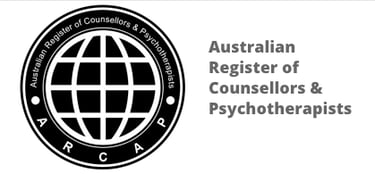Understanding Neurodiversity: How to Support ADHD and Autistic Individuals in Everyday Life
How to Support ADHD and Autistic Individuals in Everyday Life
COUNSELLING ADHDAUTISM


Introduction – What Neurodiversity Is and Why Understanding It Matters
Neurodiversity is a relatively contemporary concept that acknowledges and celebrates the varied neurological differences within our population. This term encompasses a broad spectrum of conditions, including Attention Deficit Hyperactivity Disorder (ADHD) and autism spectrum disorder, recognising them as natural variations of the human brain rather than pathologies that need to be cured. The historical context of neurodiversity illustrates a shift away from viewing neurological differences through a purely medical lens; instead, it highlights the value and potential of diverse cognitive profiles. This paradigm shift has gained momentum in recent years due to increased advocacy, research, and a growing understanding of the complexities of human cognition.
Understanding neurodiversity is paramount for fostering a society that values inclusion and acceptance. Individuals with ADHD or autism often face stigma, misunderstanding, and barriers that can affect their quality of life. By recognising neurodiversity, we can promote an environment where these individuals can thrive, contributing their unique perspectives and talents. Furthermore, it allows us to examine societal structures and norms that may inadvertently disadvantage those with different cognitive profiles. Advocacy for neurodiverse individuals emphasises the importance of adjusting educational systems, workplace practices, and social policies to better reflect and support a broader range of human experiences.
In essence, the significance of understanding neurodiversity lies not only in supporting individuals with ADHD and autism but also in enriching our shared community. By acknowledging and respecting neurological differences, we are enriching our cultural fabric and making strides towards greater empathy and understanding. The journey toward inclusivity is ongoing, and comprehending the foundations of neurodiversity is a crucial step in enabling a more compassionate world for everyone.
ADHD and Autism in Daily Life – Common Challenges Individuals Face in Work, School, and Social Settings
Individuals with Attention Deficit Hyperactivity Disorder (ADHD) and autism often encounter significant challenges in their everyday environments, including workplaces, schools, and social settings. These challenges can manifest in various forms, notably difficulties with concentration, time management, and social interactions. For instance, a student with ADHD may struggle to focus during lessons, leading to missed instructions and a lack of understanding of the material being taught. Likewise, an autistic individual may experience trouble interpreting social cues, which can hinder their ability to build and maintain friendships.
Time management can pose another significant hurdle. Individuals with ADHD frequently find it challenging to organize tasks and adhere to schedules, resulting in missed deadlines and last-minute rushes. Similarly, autistic individuals might struggle with transitioning between activities or adapting to changes in routines, which can lead to heightened anxiety and stress. In professional settings, these difficulties can further complicate performance evaluations, promotions, and job retention, creating barriers to success.
Moreover, sensory overload is a common experience for both ADHD and autistic individuals. Sensory sensitivities can be triggered by a variety of stimuli, such as loud noises, bright lights, or crowded spaces, leading to overwhelming feelings and the desire to withdraw from social interactions. Such sensory challenges are often exacerbated by societal stigmas and stereotypes, which can contribute to misunderstandings and discrimination in workplace and educational environments. These negative perceptions not only affect personal relationships but can also impede professional development, limiting opportunities for advancement and recognition of skills.
In understanding the lived experiences of individuals with ADHD and autism, it is crucial to foster empathy and create supportive environments. Recognizing these challenges can aid in developing strategies that accommodate neurodiverse individuals, ensuring they can thrive in various aspects of life.
Creating Inclusive Environments
To effectively support individuals with ADHD and autism, it is essential to create inclusive environments that meet their unique needs. One practical approach is implementing flexible scheduling, which allows individuals to work or learn at their optimal times. This flexibility acknowledges that concentration and productivity can fluctuate due to various factors, enabling individuals to thrive within a framework that supports their neurodiverse traits.
Communication Tips
Communication is pivotal when interacting with neurodiverse individuals. Utilizing alternative communication methods, such as visual aids or written instructions, can significantly enhance understanding. Many individuals with ADHD and autism may process information differently; thus, providing clear and structured communication can alleviate confusion or anxiety. It is also beneficial to practice active listening—showing genuine interest and engagement in what the individual is expressing, and responding thoughtfully. This fosters a respectful dialogue and creates a safe space for open communication.
Sensory-Friendly Adjustments
Additionally, making sensory-friendly adjustments in physical spaces can profoundly impact individuals with sensory sensitivities, which is common among those with ADHD and autism. This can include minimizing loud noises, providing quiet areas, and using soft lighting. Establishing designated sensory spaces where individuals can retreat when feeling overwhelmed is crucial. Incorporating tactile and soothing elements, such as fidget tools or calming colors, can enhance comfort and concentration.
Conclusion
By employing these practical strategies—such as flexible scheduling, effective communication techniques, and sensory-friendly modifications—we can foster an inclusive atmosphere that supports individuals with ADHD and autism. Ultimately, these efforts contribute to a more understanding and accommodating society, allowing neurodiverse individuals to thrive in their personal and professional lives.
Mental Health Considerations – Addressing Anxiety, Burnout, and Emotional Regulation
Individuals with ADHD and autism often experience unique mental health challenges that require attention and understanding. Common issues include anxiety, emotional dysregulation, and a significant risk of burnout. Anxiety may manifest as excessive worry or nervousness, while emotional dysregulation can lead to intense emotional responses that are difficult to manage. Recognizing these signs is crucial for anyone supporting neurodiverse individuals, as they not only affect daily functioning but can also impact overall well-being.
Burnout, particularly, is prevalent among those with ADHD and autism. It can result from the continuous effort to navigate a world that may not accommodate their neurological differences. Symptoms of burnout may include fatigue, frustration, or a sense of hopelessness. To combat these phenomena, individuals can implement various self-care strategies and coping mechanisms. For example, establishing a consistent routine can provide a sense of stability, while scheduling regular breaks can help mitigate feelings of overwhelm.
Mindfulness practices such as deep-breathing exercises, meditation, or gentle physical activities like yoga, can significantly enhance emotional regulation. These practices can help individuals center their thoughts and feelings, promoting a calmer state of mind. Additionally, engaging in creative outlets or hobbies can serve as an effective emotional release and a means to express oneself.
It is important to remain vigilant for signs that professional help may be necessary, especially when daily coping strategies are insufficient. Mental health professionals can provide tailored strategies and interventions that address specific concerns, ranging from therapy to medication. By promoting an understanding of these mental health considerations, we can foster a more supportive environment for individuals with ADHD and autism, helping them thrive in their everyday lives.
Resources & Further Support
Understanding neurodiversity, particularly in relation to ADHD and autism, is crucial for fostering an inclusive environment. Numerous resources are available that can help individuals gain deeper insight and knowledge. First and foremost, a variety of books can serve as excellent starting points. Titles such as "The Reason I Jump" by Naoki Higashida and "Driven to Distraction" by Edward M. Hallowell are well-regarded for their valuable perspectives. These texts can illuminate the experiences of neurodiverse individuals and provide practical strategies for understanding their unique challenges and strengths.
In addition to literature, several websites offer comprehensive information on ADHD and autism. Organisations such as the National Autism Association and CHADD (Children and Adults with Attention-Deficit/Hyperactivity Disorder) provide articles, guides, and resource directories tailored for parents, educators, and advocates. Social media platforms also host a variety of online communities where individuals can share resources and experiences, such as forum discussions and support groups dedicated to neurodiversity. Engaging in these spaces can foster connection and support among those navigating similar experiences.
Professional guidance is an integral part of understanding and supporting neurodiverse individuals. Consulting therapists who specialise in ADHD and autism can provide tailored strategies and coping mechanisms. Additionally, local support groups and workshops can facilitate collaborative learning among individuals and families dealing with these conditions. Online platforms often list virtual workshops and webinars where experts share their knowledge and experiences, making information more accessible to those seeking assistance. By utilising these resources, readers can equip themselves with the tools needed to effectively advocate for and support neurodiverse individuals in everyday life.

